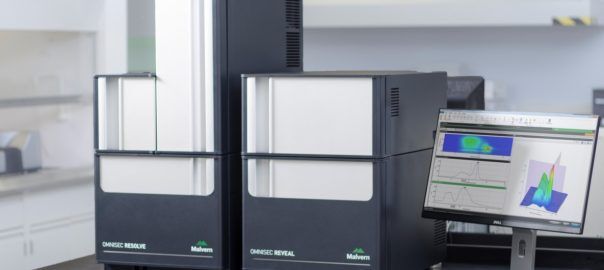Particle size is by far one of the most important physical properties of particulate samples. The measurement of particle size distribution is routinely carried out across a wide range of industries for mainly two reasons; to better understand how particle size will affect their product performance and to optimise and control the quality of products and processes during manufacturing.
In addition to particle size, the shape or morphological surface properties of the particles can be equally as important or even interrelated eg. surface area and particle size. The size and shape of a particle can influence a variety of material properties. From dissolution rates of tablets, stability of paints, the texture of foods and coatings, to the flowability and packing density of powders, understanding particle size and shape can be critical when designing a product for a particular purpose or behaviour.
Why measure particle size using laser diffraction?
Laser diffraction technology for routine particle size analysis remains the method of choice across a diverse range of industrial sectors. The speed and ease of use of this technology and the wide dynamic range (nm to mm)1 give users access to quick, reliable particle size data with minimal effort.
Laser diffraction is a non-destructive ensemble technique, meaning it calculates particle size distribution for the whole sample rather than building up a size distribution from measurements of individual particles. A sample, dispersed either in solution or fed dry which is passed through a collimated laser beam, scatters light over a range of angles. Large particles generate a high scattering intensity at relatively narrow angles to the incident beam, while smaller particles produce a lower intensity signal but at much wider angles. Laser diffraction analysers like the Mastersizer 3000 record the angular dependence of the intensity of light scattered by a sample, using an array of detectors. The range of angles over which measurements are made directly relates to the particle size range which can be determined in a single measurement2.
However, particles are 3-dimensional objects, and unless they are perfect spheres (e.g. emulsions or bubbles), they cannot be fully described by a single dimension such as a radius or diameter3. Therefore, to simplify the measurement process particle size is defined using the concept of equivalent spheres. The equivalent sphere concept works very well for regular-shaped particles, but for particles that are shaped like needles or plates, the size in at least one dimension can differ significantly from that of the other dimensions.
For this reason, many groups also employ low-cost sieve analysis to evaluate the large particle content. However, in addition to being slow and manually intensive, sieving lacks sensitivity at the fine fraction of the distribution, particularly at < 38 µm which is known as the sub-sieve size region4. Excessive fines in this size range tend to cause attraction or bridging of particles and are often combined with humidity or sticking issues. Wet sieving may help, but screen blocking is still common especially in smaller sizes. Laser diffraction using wet or dry dispersion methods overcomes these issues and enables faster, simpler analysis with better resolution and control of agglomerates.
How can imaging help measure particle size more accurately?
Imaging allows users to visually see the particles to determine particle size and shape and is complementary to laser diffraction particle sizing, allowing more data to be collected and measured.
The Hydro Insight is a dynamic imaging tool that sits alongside the Mastersizer 3000 particle size analyser. It provides real-time images of individual particles as well as quantitative data on particle shape at the same time as laser diffraction size measurements. Particles dispersed by the Mastersizer 3000’s wet accessories flow through the Hydro Insight and are then photographed by a high-resolution digital camera at up to 127 frames per second. The camera takes images of the suspended particles in the analysis cell, converts them to a digital format, and sends the information to the software for final analysis in real-time. Individual particle images are viewed directly and captured as image files for post-run processing. More than 30 size and shape metrics available such as circularity, ellipticity, opacity, mean diameter, and aspect ratio allows the user to understand how the combination of particle size and shape affects material behaviour.
Adding the Hydro Insight to your Mastersizer 3000, combines shape data with size data to enable the following benefits:
#1 Gain a deeper understanding of why materials behave the way they do
Hydro Insight provides real-time images of liquid dispersions of individual particles to provide quantitative data on particle shape. Circularity and aspect ratio (width and length) can be used to distinguish between particles that have regular symmetry, such as spheres or cubes, and particles with different dimensions along one axis, such as needle shapes. Other shape parameters that can be used to characterise particle form include elongation and roundness. This plays a significant role in applications such as powder processes where size and shape can influence powder flowability/ blending properties, cohesion/ formation of agglomerates, tableting/ compaction behaviour, porosity/ reactivity, and even health and safety. When assessing pharmaceutical drug products the size and shape of particles can influence drug delivery within the body, dissolution behaviour, bioavailability, and drug efficacy.
#2 Speed up method development
When setting up a method to measure particle size using laser diffraction, achieving optimal dispersion is important to prevent agglomerates and to ensure the reproducibility of results. This can involve multiple steps from varying the dispersant type or amount of surfactant to the amount of mechanical mixing or ultrasound needed. By combining size analysis with imaging, particles can be seen live in a liquid and any agglomerates that form can quickly be identified and dispersed using optimal conditions. Users can see their dispersion as they develop laser diffraction methods, saving time for other projects.
#3 Build confidence in product quality
Laser diffraction is an ensemble technique able to measure particle size and particle size distribution for a wide range of samples over a wide dynamic range. However, for materials that require narrow polydispersity, the presence of just a few large or outlying particles can make a big difference to their performance. Large particles can block printing nozzles or cause imperfections in coatings or even be a source of immunogenicity when developing pharmaceutical drugs. Adding the Hydro Insight to the Mastersizer 3000 provides images of individual particles and gives a number-based particle size distribution, so it becomes sensitive to even small numbers of oversized particles leading to enhanced resolution.
#4 Quickly troubleshoot
Laser diffraction offers a simple, fast, and reproducible technique to measure particle size reliably; however, samples can sometimes present results that are unexpected, contain artifacts or simply be “out of spec”. Looking at your material on a microscope often needs a different sample preparation method and that can make the picture more complicated.
By adding imaging to laser diffraction workflows, the process of troubleshooting can be automated and therefore speed up analytical processes. With Hydro Insight, any anomalies in results can be assessed to determine whether they were caused by oversized particles, agglomerates, bubbles, or something else.
#5 Faster method transfer
Sieving is one of the oldest and simplest techniques for separating particles based on their size. However, the time it takes to obtain accurate results, the poor resolution, and problems associated with particle agglomeration and sieve blockage, have seen sieving being replaced in most industries with laser diffraction. Laser diffraction and sieving can provide similar results when characterising spherical or semi-spherical particles, however, differences can be observed for non-spherical particles because each technique measures different particle properties. Laser diffraction measures light scattering from a group of particles and reports size as a volume distribution of spheres that would produce the recorded pattern. In comparison to sieving, a mixture of size, shape, and density generates a weight distribution. Therefore using sieving, an elongated particle will be reported using the smaller dimension and will appear smaller when compared to laser diffraction results.
The Hydro Insight provides a window or a set of eyes into the Mastersizer. It records thumbnail images of a dispersion of particles and measures quantitative particle shape data. It can report different size parameters for irregular particles such as particle width and elongation data that may correlate better with sieve analysis and thus simplify the transfer process from sieves to laser diffraction.
Laser diffraction provides fast, reproducible particle size data for a range of applications. Image analysis is often used in combination with laser diffraction to provide a further understanding of how materials behave as well as being an orthogonal technique that helps with method validation.
So why choose the MASTERSIZER 3000 with the Hydro Insight?
The MALVERN MASTERSIZER 3000 system has a unique, compact design that uses laser diffraction to measure particle size distribution. The Hydro Insight sits alongside the Mastersizer 3000 and provides real-time images of particles, as well as quantitative particle shape data. This enables users to gain a deeper understanding of their products for easier troubleshooting and quicker method development. Learn more about the Malvern Mastersizer 3000 and Hydro Insight system, speak to ATA Scientific today.




 02 9541 3500
02 9541 3500








